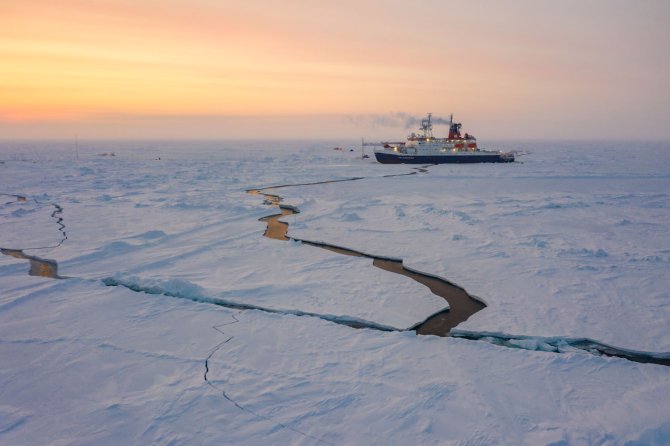
News
Diet young polar cod more varied than previously assumed
Earlier research by Wageningen Marine research (WMR) and partners, including the German Alfred Wegener Institute (AWI), showed that many juvenile polar cod live close to the sea ice of the central Arctic Ocean, feeding partly on organisms that also live in and under the sea ice. Because of the difficulty in catching these fish, there are few studies looking at their diet. A new publication in the scientific ‘Journal of Fish Biology’ compares the diet of fish caught during different expeditions on board icebreaker Polarstern. This provides a more complete picture of their food sources in the central Arctic Ocean, which can contribute to nature management and fisheries policy in this area.
One of the reasons why so little is known about young fish under the sea ice is that it is difficult to get under the ice with a large enough net. Thanks to the Surface and Under Ice Trawl (SUIT), this was possible, and polar cod were sampled during three expeditions. Another opportunity to catch fish occurred during the MOSAiC expedition, during which the Polarstern drifted along with the Arctic Ocean sea ice for a year. During this expedition, fish were caught in various ways. Former AWI colleague Giulia Castellani even caught polar cod by hand through a hole in the ice.
Diet of polar cod
The analysis showed that the diet of juvenile polar cod is more varied than previously assumed, and varies by location and season. To gain more insight into feeding behaviour, the study examined what food was available at the sites where the fish were caught and what the energy content of this food was. Carmen David of the Wageningen University developed a computer model to investigate how the growth of the fish might be influenced by the quantity and quality of the food, and the water temperature. Results showed that juvenile polar cod appear to be a ‘lazy’ eater, mainly consuming food that is easy to catch, such as slow-swimming animals, animals that are present in large numbers, or animals that accumulate under the sea ice. Although the fish grow better from foods with high energy content, such as copepods, the fish do not seem to actively select for these.

Research during the MOSAiC expedition was funded by the Dutch Polar Program (NWO project 866.18.003), the European Climate, Infrastructure and Environment Executive Agency (CINEA) of the Europese Commission (project EASME/EMFF/2018/003 and EASME/EMFF/2018/1.3.2.2/03/SI2.805469) and the Dutch Ministry of Agriculture, Nature and Food Quality (LNV, project WOT-04-009-047.04). Work conducted during other expeditions was funded by NWO project 866.13.009, the Helmholtz Association through the Young Investigators Group Iceflux (VH-NG-800) and the Dutch Ministry of Agriculture, Nature and Food Quality.